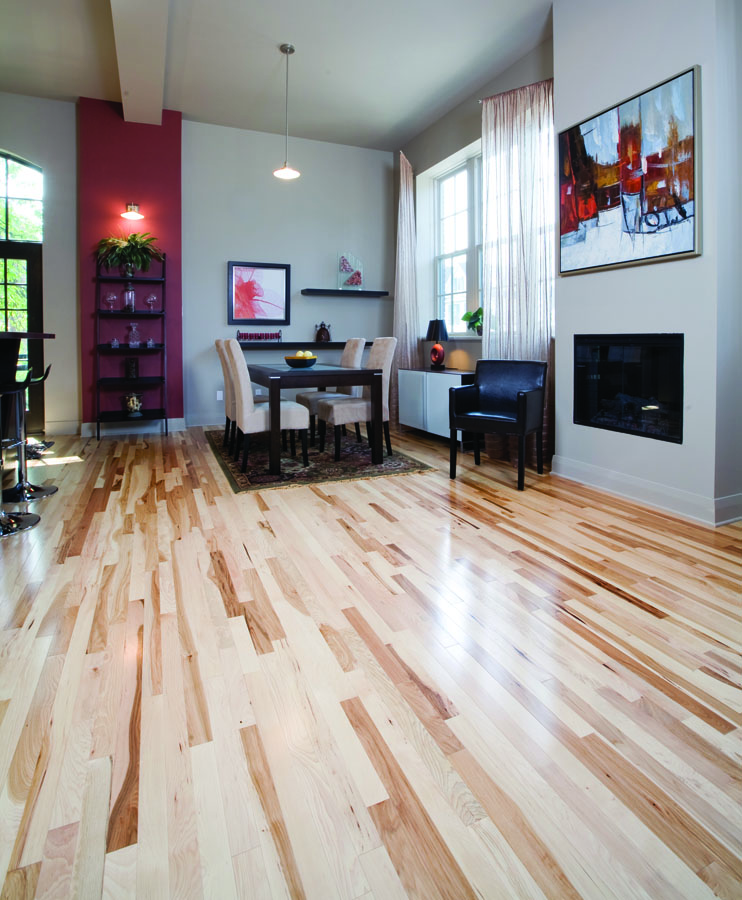Discover the timeless charm and versatility of wood flooring
It’s not surprising that wood flooring has been used in homes for centuries. Wood flooring is a popular choice among homeowners and interior designers because of its timeless elegance and natural warmth. This blog will discuss the benefits of wood flooring and the drawbacks. We will also explain how to maintain and care for your wood floor to keep it looking great for many years.
- Wood flooring: Timeless elegance
The look and feel are both irresistible. Wood flooring is a great choice for traditional and modern interiors because of its natural grain patterns, rich colors, and warmth. The warmth and sophistication of wood flooring is difficult to achieve with other materials. The sheer number of wood species, styles, and finishes available today means that you can find a wood floor that suits your taste and budget.
Different types of wood flooring
Solid Hardwood
The traditional wood flooring is solid hardwood. The flooring is usually 3/4 inch thick and made of a single wood piece. The solid hardwood floor can be sanded, refinished and reused multiple times. This makes them an investment that will last a lifetime. Oak, maple, walnut, cherry and hickory are popular hardwood species.
Engineered hardwood
Engineered hardwood is made up of several layers of wood. The top layer is hardwood veneer, and the base is high-quality plywood. Engineered hardwood is more stable and can withstand temperature and humidity fluctuations better than solid hardwood because of its construction. Engineered hardwood can also be sanded and can be refinished. However, this happens less often than with solid hardwood.
Reclaimed Wood
Reclaimed wood is often made from wood salvaged from old barns or buildings. This flooring type is environmentally friendly and has a rustic, unique charm. Reclaimed wood floors have a unique story to tell. Their imperfections such as nail holes, knots and weathering add character and charm.
Bamboo Flooring
Bamboo flooring is an eco-friendly and sustainable alternative to hardwood. Bamboo flooring is well-known for its durability and strength, making it a great choice for areas with high traffic. Bamboo flooring comes in many styles and colors, from natural, light shades to rich, dark hues.
The Benefits of Wood Flooring
Aesthetic Appeal
Wood flooring can be a beautiful and versatile choice for any interior design. Wood flooring’s warmth and natural beauty can create an inviting, cozy atmosphere in any space.
Durability
Wood floors are a great investment because they can last for a long time with proper maintenance. Wood floors can be sanded and refinished to restore their original beauty, even after many years of use.
Improved Indoor Air quality
Wood flooring can be a hypoallergenic choice that improves indoor air quality. It does this by reducing allergens like dust and pet hair. It can be particularly beneficial for those with allergies or asthma.
Easy maintenance
Wood floors require less maintenance than other types of flooring. Wood floors can be kept clean by regular sweeping, vacuuming and damp mopping.
The downsides of wood flooring
Cost
Wood flooring is more expensive than other materials such as laminate and tile. Wood floors are durable and long-lasting, making them a good investment.
Moisture Damage
Wood flooring is susceptible to moisture damage, which can lead to warping, cupping or buckling. Wood flooring is not recommended for rooms with high humidity, or those that are prone to exposure to water. This includes bathrooms and basements. Engineered hardwood flooring and bamboo are more resistant to water than solid hardwood. However, it is still important to take steps to avoid water damage.
The vulnerability to scratches and dents
Wood floors are susceptible to scratches and dent from heavy furniture or pet claws. To minimize damage, choose a hardwood with a high Janka rating. Use protective pads underneath furniture legs and trim your pet’s nails.
Care and Maintenance of Wood Flooring
Preventive Measures
Use area rugs and mats to protect your hardwood flooring. These are best placed in areas with high traffic, such as entryways. Use protective pads to protect furniture legs and a humidifier/dehumidifier for a humidity level between 35%-55%.
Cleaning
Vacuum or sweep your wood floor regularly to remove dirt. Avoid harsh chemicals and abrasive cleaning products that can damage wood finishes. Use a damp mop with a mild floor cleaner designed specifically for wood floors. Clean up spills immediately to avoid water damage.
Refinishing
Wood floors can dull over time or become scratched. Refinishing wood floors will restore the original beauty of your floor and increase its lifespan. Refinishing involves sanding down the floor and removing the old finish. Then, a fresh coat of finish is applied. Solid hardwood floors are refinishable multiple times. Engineered hardwood is usually only refinished one or two times.
The conclusion of the article is:
Wood flooring is a beautiful choice for its natural warmth and timeless elegance. It also has exceptional durability. There are a wide range of wood species, styles, and finishes available. This means that there is a wood floor to suit every budget and taste. Wood floors will remain beautiful in your home as long as you understand the pros and cons of each type of flooring. Wood flooring can transform your home into a place of style and comfort.


